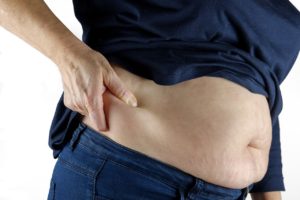Are You In Pain?

Pain during menopause is one of the most unrecognised signs of the meno years.
Women in midlife are far more likely to experience chronic pain than men.
Joint pain is often listed as one of the 34 common signs of peri/menopause. Other types of pain can also be symptoms including headaches, cramps, breast tenderness, painful sex and fibromyalgia.
This study found women in midlife are more vulnerable to pain but acknowledges it’s not well understood. According to Healthline, menopause may bring heightened sensitivity to pain particularly in cases of fibromyalgia – a chronic pain condition. Fibromyalgia is often diagnosed for the first time in women entering perimenopause or menopause.
First-Hand Experience
Chronic pain during menopause is debilitating. I can tell you this from first-hand experience as, until very recently, I’ve experienced it for the past five years.
It came on suddenly, was linked to extraordinarily stressful life events (house sale, separation, serious illness), and immediately changed my life as I knew it.
Restrictive
I was unable to get dressed, clean, garden, exercise, have a bath without getting stuck, or get off the loo with ease. This was frustrating for someone who loves to renovate, exercise regularly and clean the house with ardour! I’m happy to say I can now do all of those things except getting in and out of the bath easily. I’m slowly and steadily working on re-building strength through Yoga.
It’s not to say my condition was due to perimenopause and the meno years, and my doctors had no answers. They couldn’t diagnose fibromyalgia. At one point the specialist team suspected rheumatoid arthritis but that turned out to be unfounded. A GP friend who was staying with us and holds a PhD in biochemistry said it was undoubtedly an autoimmune condition.
Holistic Help
I studied holistic nutrition to learn about the link between food and autoimmune disease. I’d noticed the pain was milder when I adhered to eating mostly plants and avoided grains, gluten, dairy, and sugar. Meat is inflammatory too but I’m already a long-standing vegetarian. I wasn’t always perfect (wine and carbs are a weakness!), but I knew I’d feel so much better if I was strict.
There are a lot of studies out there now that show a whole foods diet lessens inflammation. Certainly my case appears to underline the research.
Hemp seed oil is the other thing I’m fairly certain made a difference. It contains the perfect ratio of omega 3 and 6 essential fatty acids and anti-inflammatory GLA (gamma linoleic acid). A couple of months after I began taking it daily things improved. A lot.
A New Study
If you’re experiencing pain you may be interested in a recent study looking at 200,000 women. They were aged between 45-64 and researchers found that those with peri/menopausal signs were twice as likely to suffer from chronic pain.
“Changing levels of hormones around menopause have complex interactions with pain modulation and pain sensitivity, which may be associated with vulnerability to either the development or exacerbation of pain conditions,” says JoAnn Pinkerton, MD, Executive Director of the North American Menopause Society (NAMS). “This study suggests that menopause signs may also be related to chronic pain experience.”
Your Pain May Be Hormonal
So any pain you’re experiencing could be due to the hormonal changes going on in your body. Most women don’t connect those dots because they don’t realise there’s a link.
Getting those hormones on an even keel helps with all of those pesky signs: hot flushes, depression, anxiety, insomnia and, of course, the topic of the day – pain.
As for my pain? It was probably a combination of things but I hope it never comes back. I’ll keep taking my 40+, hemp seed oil and ditching meat, gluten, dairy etc. for the most part because this clearly made a difference.
If you’re thinking that’s not easy, it’s not always. But I follow the ’80/20 good living’ rule and adhere to it eighty percent of the time and relax the rules the other 20 percent!
I also endeavour to minimise my stress levels and I’ve noticed warmth is super helpful. Tropical island during the winter (when those borders open!) anyone? 🌴









